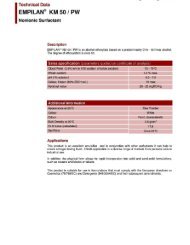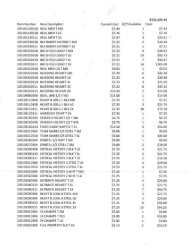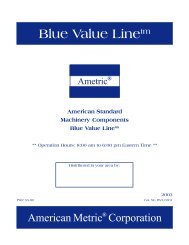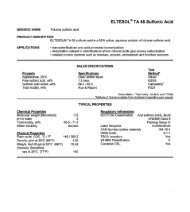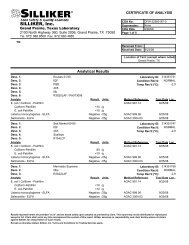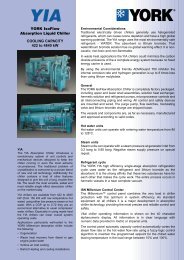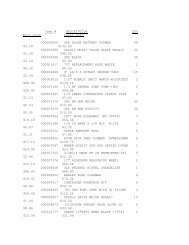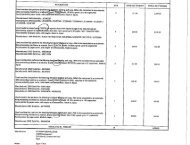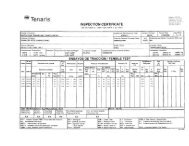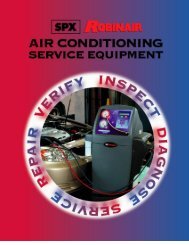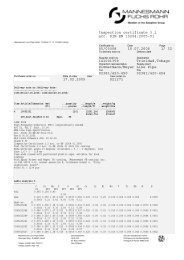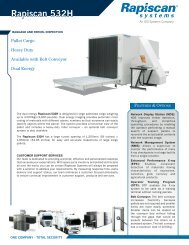Chip Blaster manual - Salvex
Chip Blaster manual - Salvex
Chip Blaster manual - Salvex
Create successful ePaper yourself
Turn your PDF publications into a flip-book with our unique Google optimized e-Paper software.
<strong>Chip</strong>BLASTER, Inc. 62<br />
18.0. BELT INSTALLATION (Cont.):<br />
18.3.1.2. Increase the belt tension until the belt feels snug or taut. Avoid over<br />
tensing the belt.<br />
18.3.1.3. Start the drive and apply the most severe load condition. This may be<br />
either the motor starting torque or during the work cycle. A belt that is<br />
too loose will “jump teeth" under the most severe load condition. When<br />
this occurs. gradually increase the belt tension until satisfactory<br />
operation is achieved.<br />
18.4. BELT TENSIONING - FORCE DEFLECTION METHOD:<br />
18.4.1. An alternate numerical method can also be used to properly tension the belt on a<br />
Synchronous drive. This procedure, commonly referred to as the Force Deflection<br />
Method, consists of measuring the pounds of force required to deflect the belt a<br />
given amount.<br />
18.4.1.1. Install the belt as per Steps 1 and 2 of the General Method. Measure the<br />
span length (in inches) as illustrated in Figure 11.<br />
18.4.1.2. From Figure 11 determine the deflection height required for the drive.<br />
The deflection height is always 1/64" per inch of span length. For<br />
example. a 32" span length requires a deflection of 32/64" or 1/2". To<br />
measure the deflection height place a straightedge from sprocket to<br />
sprocket on top of the belt or wrap a string or steel tape around the<br />
sprockets on top of the belt. This will serve as a reference line to<br />
measure deflection inches.<br />
18.4.1.3. Using the formula at below, calculate the minimum and maximum force<br />
values (lbs.).<br />
18.4.1.4. Using a spring scale, apply a perpendicular force to the belt at the midpoint<br />
of the span as illustrated in Figure 1. NOTE: For belts wider than 2<br />
inches, it is suggested that a rigid piece of key stock or something<br />
similar be placed across the belt between the point of force and the belt<br />
to prevent belt distortion. Compare this defection force value to that<br />
found in 18.4.1.4. Adjust belt tension accordingly.<br />
Actual belt installation tension required depends on peak loads, system<br />
rigidity, teeth in mesh. etc. In some instances it may be necessary to<br />
gradually increase the belt tension to achieve proper operation of the drive.<br />
18.4




